Apollo 16: Celebrating 50 years since the penultimate moon landing
"We were excited [though] we were six hours late landing and [on] the last revolution we could land."

Charlie Duke thought he was on his way to exploring an area of the moon that was different from where NASA has sent astronauts before.
He just did not know how different it really was.
The lunar module pilot on NASA's penultimate moon landing mission, Duke lifted off with his two Apollo 16 crewmates, commander John Young and command module pilot Ken Mattingly, 50 years ago on Saturday (April 16). Young and Duke were tasked with landing at the Descartes Highlands.
"The landing site was selected by a team of geologists and scientists. As I recall, the only reason they talked to us was to say, 'Do you think you can land here?'" said Duke, speaking on April 2 at an Apollo program brunch organized by the Astronaut Scholarship Foundation to celebrate the 50th anniversary of Apollo 16.
Young and Duke consulted their maps and agreed, "Sure, we can land there."
Their charts, though, were based on stereographic photo taken during the Apollo 14 mission and they only resolved features 45 feet across (14 m) or larger. So the Apollo 16 crew only trained to avoid the craters that were included on the maps and all of those were 1,640 feet across (500 meters) and greater.
Related: Apollo 16: NASA's 5th crewed moon landing in pictures
Get the Space.com Newsletter
Breaking space news, the latest updates on rocket launches, skywatching events and more!
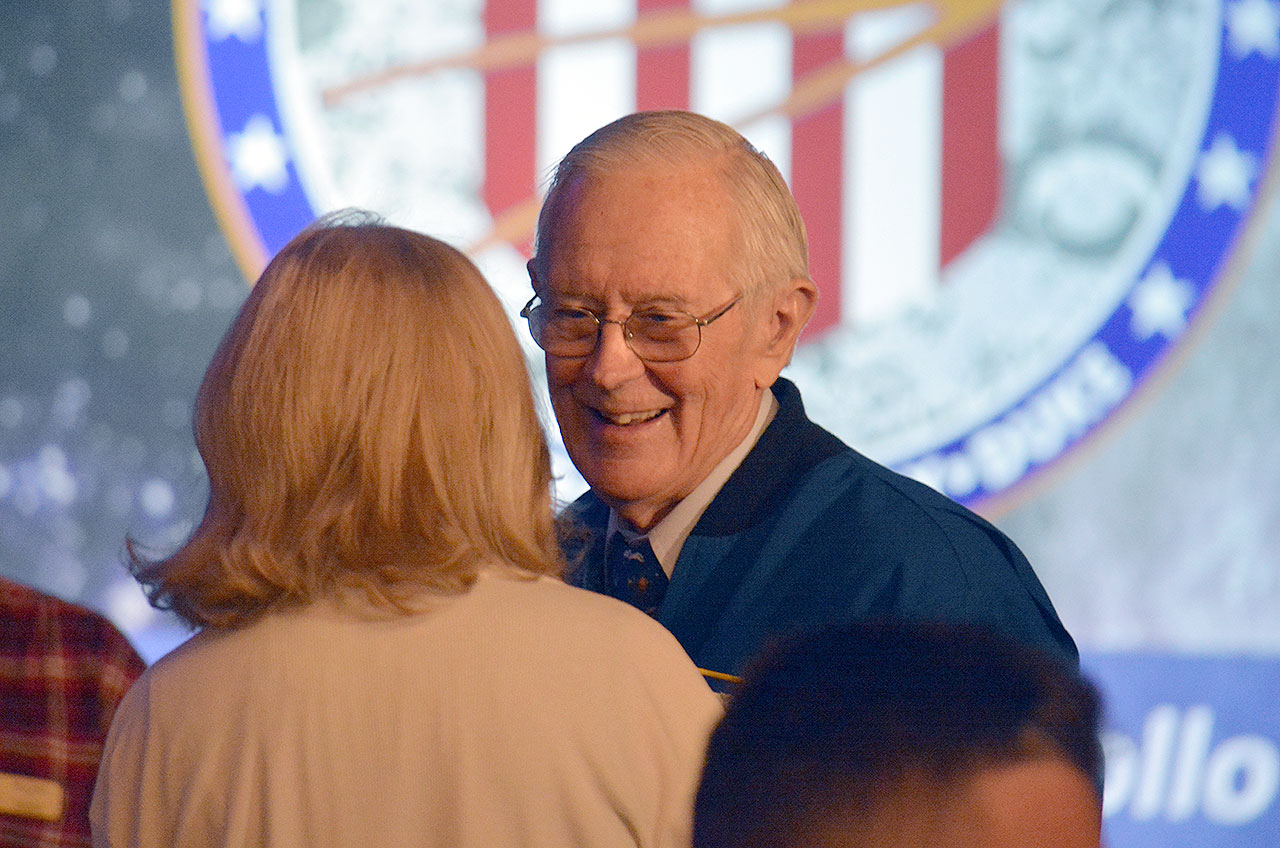
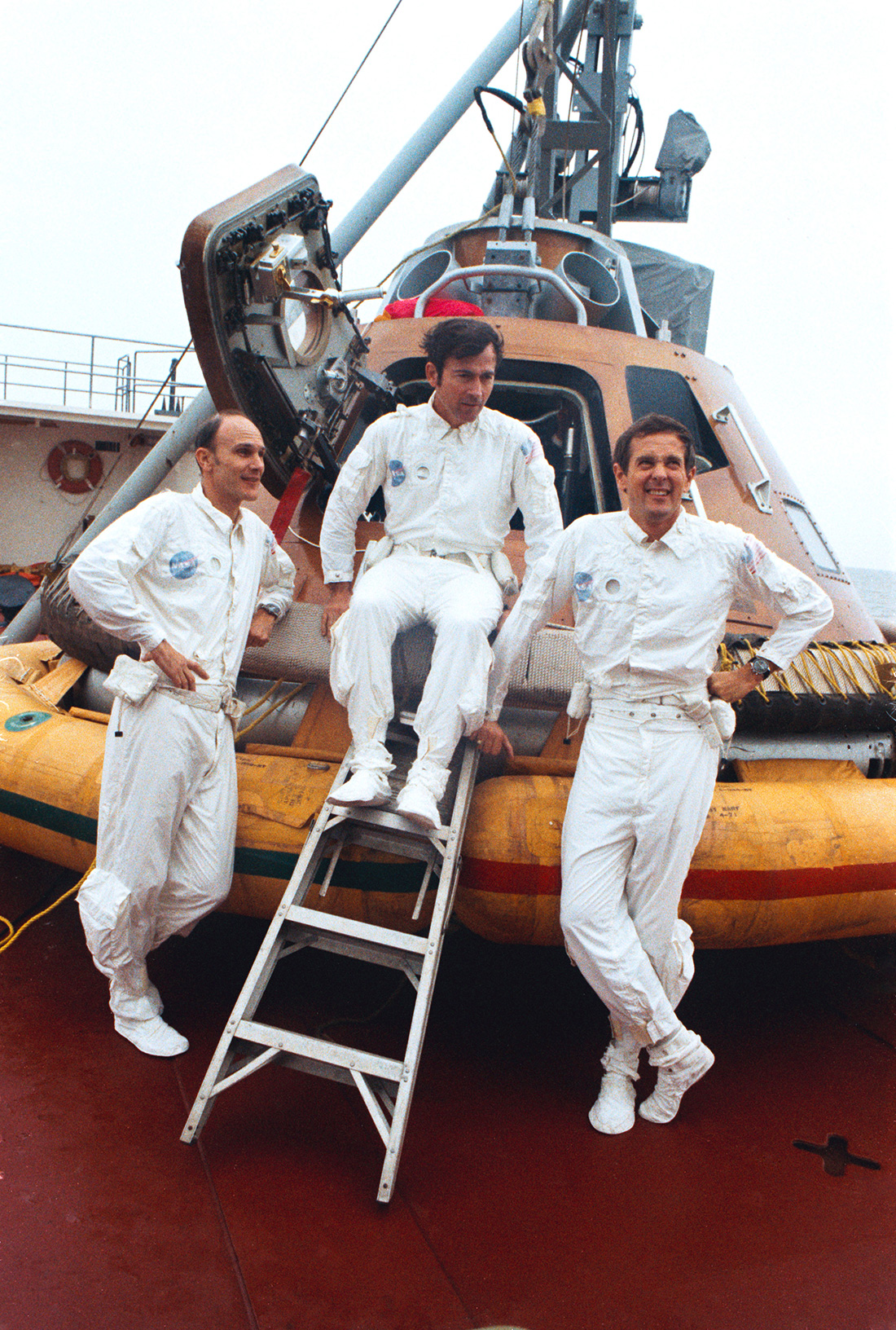
— Commander: John Young
— Command module pilot: Ken Mattingly
— Lunar module pilot: Charles Duke,
"Well, at 7,000 feet, when the vehicle pitched over? There were a lot of craters down there that were less than 45 feet. So John had a difficult time maneuvering around, but finally picked the perfect spot as we touched down," said Duke.
That alone, though, was not that unusual.
"As it turned out, every landing had to be manual," said Fred Haise, who served as backup to Young on Apollo 16 (John Young died in 2018 at the age of 87). "As Charlie described, when people came out of the pitchover and actually surveyed the places that the computer would have landed, they weren't suitable. On every flight, the commander had to take over the LM [lunar module] and move it to some degree to find a place that was satisfactory."
At 9:54 p.m. EST on April 20, 1972, Orion touched down on the moon, about 905 feet (276 m) northwest of the planned landing point.
"We were excited," said Duke, "[though] we were six hours late landing and [on] the last revolution we could land."
Not that Young and Duke were complaining. Mission Control might have waved off the landing completely.
"Thanks to Mission Control, they gave us the 'go' for landing, because right before that, Ken Mattingly had had a problem in the command module with the service module control system." Duke recalled. "Of course, it all worked out to everybody's benefit and we appreciate all of the hard work that people did to make it possible."
Related: NASA's moonwalking Apollo astronauts: Where are they now?
High albedo
The differences at Descartes did not end, however, with finding more craters than expected. The reason that the scientists and geologists had chosen the site turned out to be false, too.
"We had not yet really sampled the highlands' material — the lighter material you see on the moon — and the backside of the moon is all this lighter material," said Tony England, who was in Mission Control serving as capcom during the Apollo 16 moonwalks. "We knew the number of missions were diminished and so the idea of sampling four fifths of the lunar surface — as that's what this material represents — became really important."
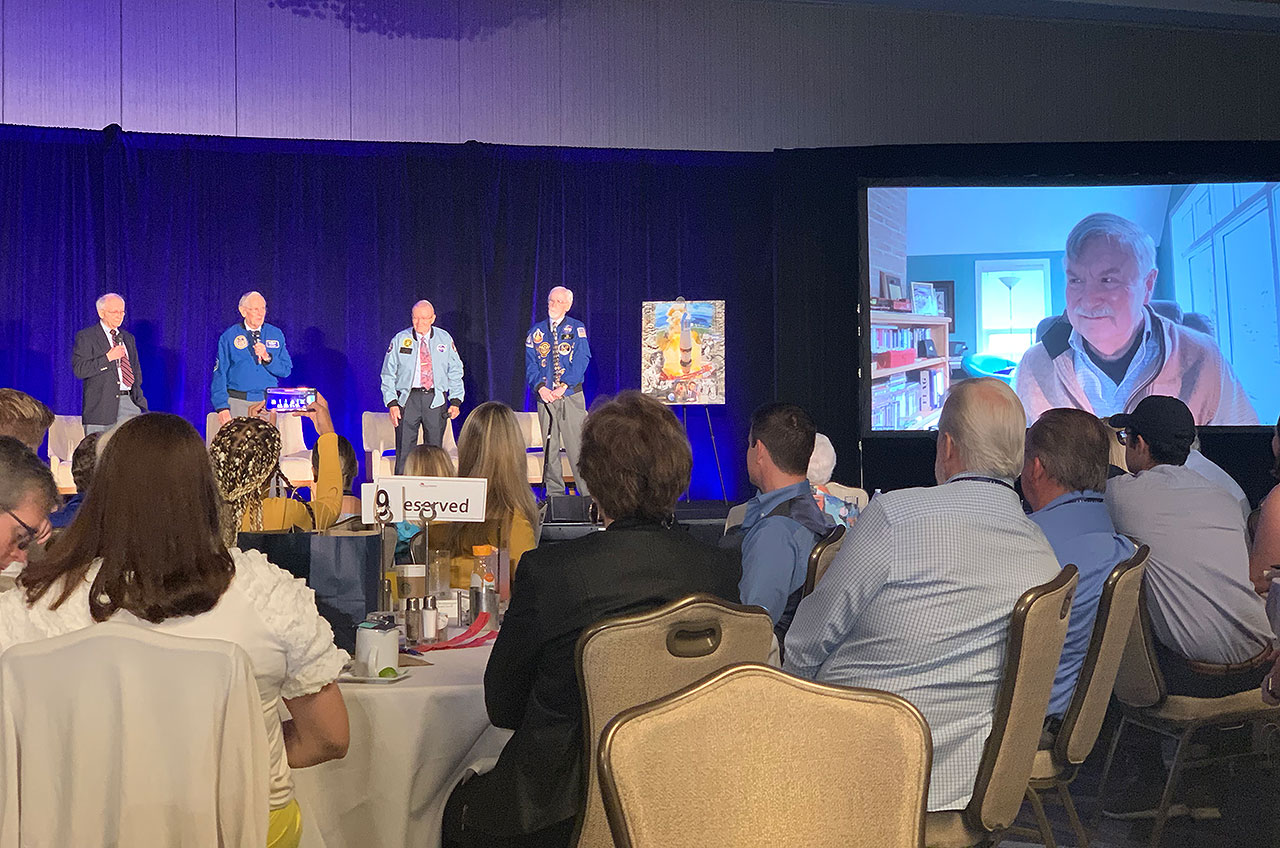
The belief was that the brighter or high albedo material was the result of volcanic activity, but as Young and Duke began to explore their surroundings, their training kicked in and they quickly realized that was not the case.
"They recognized it still as anorthositic, it was lighter in color and rich in aluminum and calcium, but it was breccia — a rock that has been recreated because of past impacts," said England.
"We started describing the rocks and it was totally different from what he had been briefed, and I kind of got the impression that we wasted six years on these guys and they did not know what they were seeing," said Duke. "But as Tony said, then they got really excited about the descriptions of the rocks that we were collecting."
So the geologists working in the backroom of Mission Control replanned what they wanted Young and Duke to do, sometimes to the astronauts' consternation.
"We were at our first stop, Plum crater, and we had walked around to the far side. The rover [lunar roving vehicle] had been parked on the eastern side of this crater and we were on the western side and as we started back, I noticed that the camera [on the rover] was pointed at this big rock. Then Tony said, 'Pick up that rock.'"
"So John says, 'You sure you want us to pick up this big rock, Houston?' and the reply came, 'Yeah, yeah, pick up that big rock,'" Duke recounted.
Related: Apollo Moon Landing Hoax Theories That Just Won't Die
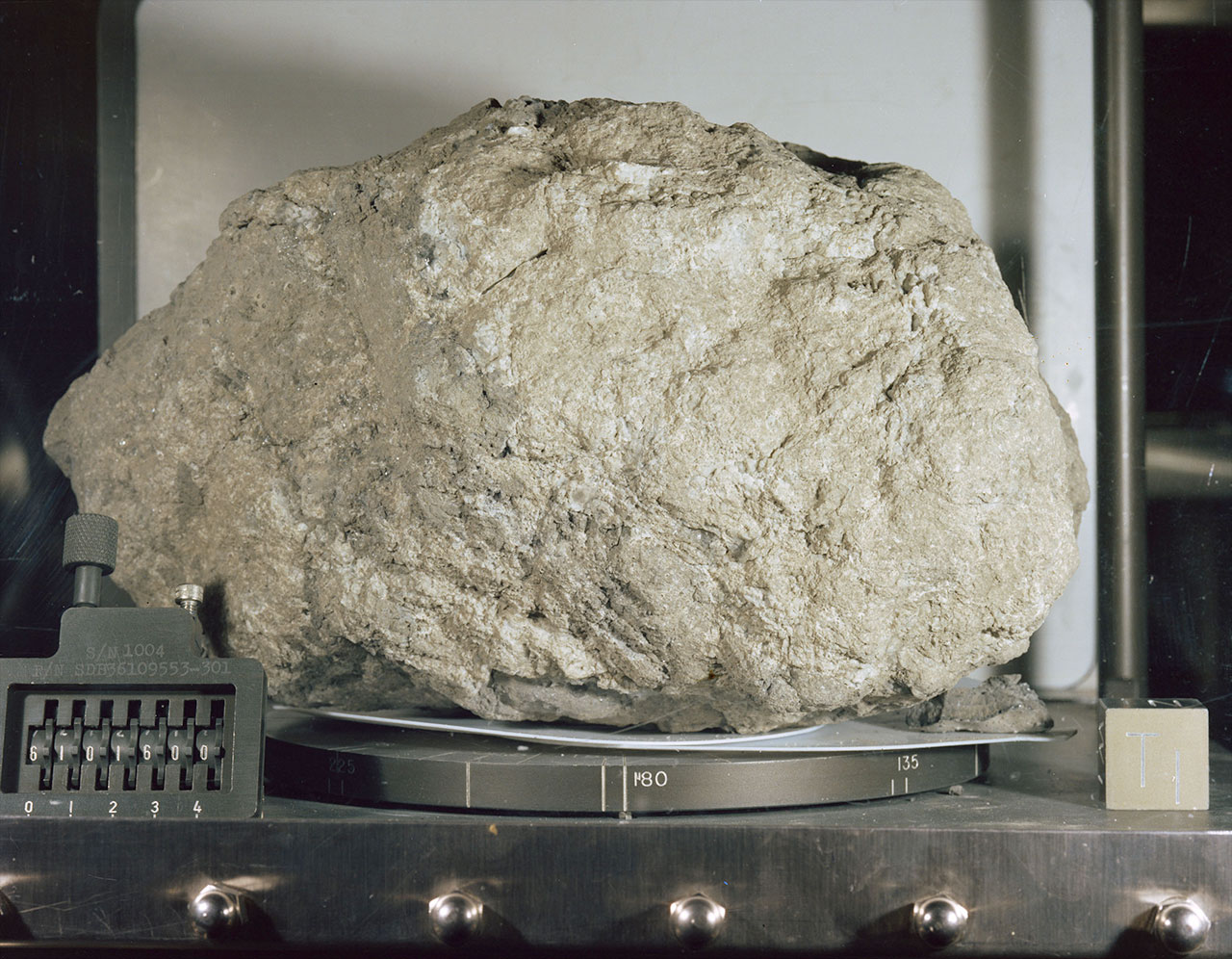
The rock in question was on the slope of the crater, leaning in. Duke tried to reach down and pick it up from the upside, but couldn't.
"I had to walk around to the downside, so I started fussing. 'If I fall into this crater, Muehlberger, you've had it," said Duke, referring to Bill Muehlberger, Apollo 16's field geology team leader, who was advising from Mission Control.
The only way Duke could lift up the rock was to roll it up his leg.
"And John kept saying, 'You sure you want his rock, Houston? It's the size of a watermelon!' But we finally cradled it like a watermelon and took it back to the rover and I didn't fall into the crater, so Muehlberger made it safely," Duke said with a laugh.
The rock turned out to the be the largest sample of the moon returned by the Apollo program. Weighing in at 26 pounds (11.7 kg), it was named "Big Muley" after Muehlberger.
Leave this tape there
In addition to hauling home a total of 209 pounds (95 kg) of lunar samples and being the next-to-last mission to explore the lunar surface (to date), Apollo 16 is remembered 50 years later as the second mission to use of the lunar rover and second extended stay on the moon.
The youngest of the Apollo moonwalkers (he was 36 at the time), Duke also flew country music to the moon, a fact now immortalized in song.
"The song was written by my neighbor," Duke said. "Around the corner was a country music performer, Randy Rogers, and he become a friend of mine."
As on the missions that preceded them, the Apollo 16 crew were allowed to bring two hours of music with them. Mattingly brought classical music and Young had what Duke described as "easy listening."
For his moon-bound mixtape, Duke chose country music and turned to a friend who was a disc jockey to put it together.
"He sent me this tape, two hours worth of country music and it was divided into the parts. Each part was a big time country music star back in those days. Dolly Parton and Porter Wagoner did a half hour, and it was all for us, it was a like a private show on a tape that they did just for us," Duke said at the 50th anniversary brunch.
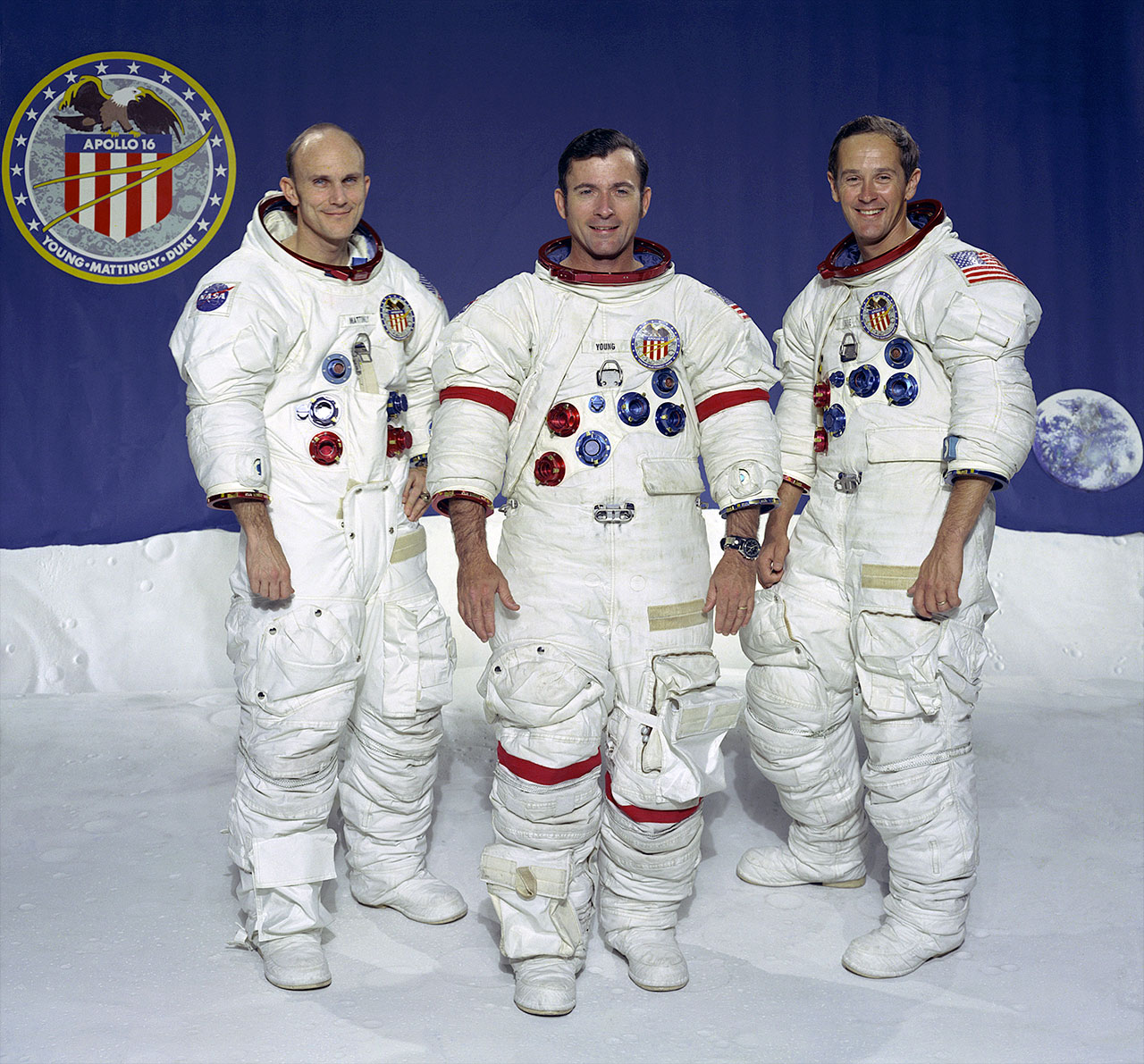
The next part of the tape was recorded by Merle Haggard and his back-up band, The Strangers.
"I hope that we are able to do something you'll enjoy hearing on the way to the moon," said Haggard on the tape. "And of course we hope you will come back, but we want you to leave this tape there. Okay? I want this tape to be out of sight."
Duke ignored the request, which was made in jest, and brought back the tape. Years later, he let Rogers have a listen.
"A couple of days later, he had written a country music song about it," said Duke.
Together with another country music star, Robert Earl Keen, Rogers recorded the song under the fictional identity, The Stryker Brothers.
"Now he was just a boy from the Palmetto state, who ended up in outer space, but he liked his music country and that, friends, is pretty cool," sang Rogers and Keen. "He blasted off and busted out those songs by Buck and Merle, Porter, Jerry, Chet and Dolly rode that rocket ship with Charlie, folks from Bakersfield and Raleigh sing with every tune, when Charlie Duke took country music to the moon."
Follow collectSPACE.com on Facebook and on Twitter at @collectSPACE. Copyright 2022 collectSPACE.com. All rights reserved.
Join our Space Forums to keep talking space on the latest missions, night sky and more! And if you have a news tip, correction or comment, let us know at: community@space.com.

Robert Pearlman is a space historian, journalist and the founder and editor of collectSPACE.com, a daily news publication and community devoted to space history with a particular focus on how and where space exploration intersects with pop culture. Pearlman is also a contributing writer for Space.com and co-author of "Space Stations: The Art, Science, and Reality of Working in Space” published by Smithsonian Books in 2018.In 2009, he was inducted into the U.S. Space Camp Hall of Fame in Huntsville, Alabama. In 2021, he was honored by the American Astronautical Society with the Ordway Award for Sustained Excellence in Spaceflight History. In 2023, the National Space Club Florida Committee recognized Pearlman with the Kolcum News and Communications Award for excellence in telling the space story along the Space Coast and throughout the world.

